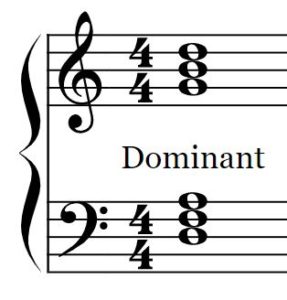

The convention is still to notate them with a sharp for upward moving lines and with a flat for downward moving lines but it's not used consistently. The flattened fifth and sharpened fourth can be used interchangeably. Granted, it mostly concerns classical music. A flattened fifth (Eb) would replace the E and would tend to resolve to D, because just like the sharpened notes tend to resolve upwards, flattened notes tend to resolve downwards. The fifth (E) is still there, this one is a degree lower, so it's a (sharpened) fourth. It's not a flattened fifth, it's a sharpened fourth. The reason it's labeled D#, instead of Eb is this. A few notes later Beethoven uses a D natural, notice how that strong tendency of resolving to E is now mostly gone. These two so-called alterations are very common to warrant a new name. Then we label it as the "melodic minor" scale. Similarly, using an F# to avoid the melodically awkward (to western classical ears) augmented second between F and G# is also quite common. But since this particular usage is very common, we usually label it the "harmonic minor scale". This is called a chromatic approach note. A semitone creates more tension and the tendency of G# to resolve to (go to) A is more powerful. Think how composers use a G# instead of a G in A minor, for example as a part of an E chord. It's called chromaticism, from the ancient Greek word for color. On the day of the start of the workshop you’ll get access to the classroom as of 13u45.It is common to use notes that are not in the scale to add color. This class room is accessible in a standard browser such as e.g. Once enrolled you’ll receive a link the day before the start of the workshop to a virtual class room where the workshop is held. You can enroll via the following eventbrite link: This 2 day workshop runs from on 31/10 and 01/11 from 14u00 till 18u00 Central European Time (CET).Ī maximum off 11 participants can join this workshop. All techniques and principles will be explained from the start.Ĩ hours in total. It also does not require you play a musical instrument or have knowledge of music notation. The workshop also does not require any previous knowledge on music theory. Metric accents (stressed and unstressed beats).Time signatures (single and compound time signatures).Common chord progressions in minor scale harmony.In the second second day of the workshop we’ll focus on more advanced concepts of harmony, scale theory, melodic intervals, melody writing and foundations of musical rhythm. Common chord progressions in major scale harmony.Major, dominant, minor, minor/major, half diminished, augmented seventh chords.Major, minor, augmented, diminished triads.Sesssion 1: 2 hours on day 1 (31/10 : 14u00 CET – 18u00 CET)ĭuring the first day of the workshop is we’ll dive into the fundamental principles and techniques of tonal harmony. This workshop is organized into two sessions: Check out more on Center-MCS and get the latest updates via our facebook page. This workshop is hosted and organized by the Center-MCS (Center for Music, Coding and Sound Design). You also do not need to play any instrument or be able to read sheet music for this workshop. The workshop is intended for musicians, music producers, composers, sound designers or artistic creative interested minds.

The workshop Practical Music Theory I gives a practical, in depth and hands on training into the fundamentals principles of the three vital elements in music: harmony, melody and rhythm.
#DOMINANT CHORD PROVIDES THE ANACRUSIS SERIES#
The workshop Practical Music Theory I, the first in a 2 part series of workshops, will hand you the necessary tools and techniques to start using music theory in your own work in a practical and direct way. Nevertheless knowing basic principles of music theory can uplift your creative process drastically and prove to be a very powerful tool to craft and further shape your musical creative ideas.

Online workshop “Practical Music Theory I”įor many artists music theory can be daunting or is just a dead end theory without practical use.


 0 kommentar(er)
0 kommentar(er)
